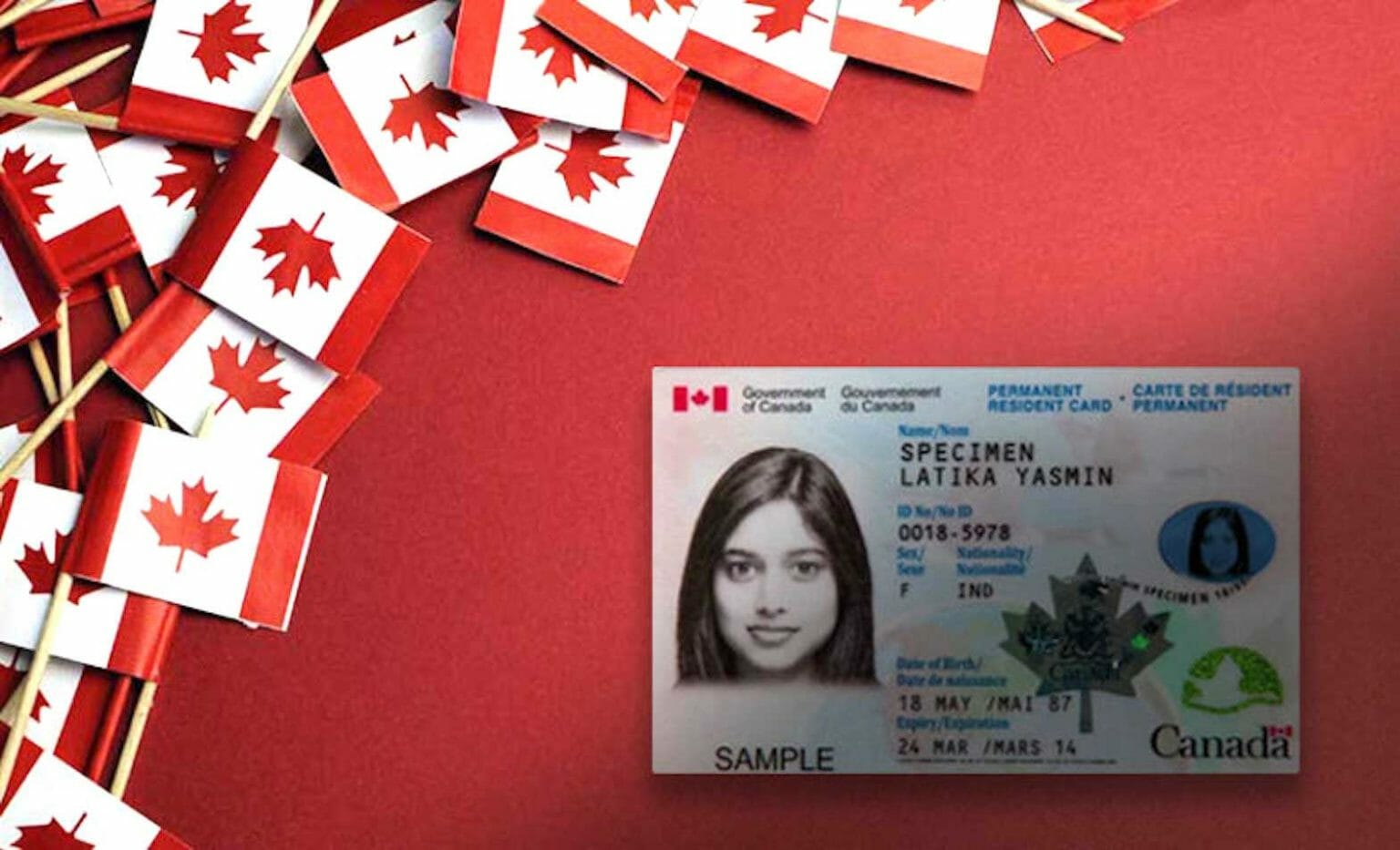Canada is one of the most sought-after destinations for immigrants due to its high standard of living, strong economy, and diverse society. Securing Permanent Residency (PR) status in Canada offers numerous benefits, including access to healthcare, education, and the freedom to live and work anywhere in the country.
This guide will explore the various pathways to obtaining direct PR in Canada, providing detailed information on each method to help you navigate the process effectively.
1. Express Entry System
The Express Entry system is the most popular and fastest route to obtain PR in Canada. It manages applications for three economic immigration programs:
Federal Skilled Worker Program (FSWP)
- Eligibility: Candidates must have at least one year of continuous full-time work experience in a skilled occupation, meet language proficiency requirements in English or French, and possess a Canadian educational credential or a foreign credential with an Educational Credential Assessment (ECA).
- Selection Criteria: Points are awarded based on factors such as age, education, work experience, language ability, and adaptability. A minimum of 67 points out of 100 is required to qualify.
Federal Skilled Trades Program (FSTP)
- Eligibility: Applicants must have at least two years of work experience in a skilled trade within the last five years, meet language proficiency requirements, and have a valid job offer or a certificate of qualification in their trade issued by a Canadian authority.
- Selection Criteria: The selection process focuses on trade skills and job offers rather than academic qualifications.
Canadian Experience Class (CEC)
- Eligibility: Candidates must have at least one year of skilled work experience in Canada within the last three years and meet language proficiency requirements.
- Selection Criteria: This program is designed for individuals with Canadian work experience and offers an advantage to those already integrated into the Canadian labor market.
2. Provincial Nominee Program (PNP)
The Provincial Nominee Program allows provinces and territories to nominate individuals for PR based on their specific economic and labor market needs. Each province has its own streams and criteria, which often include:
- Employer Job Offer Stream: Requires a valid job offer from a Canadian employer.
- Occupation In-Demand Stream: Targets individuals with experience in occupations that are in high demand in the province.
- Express Entry Stream: Linked with the federal Express Entry system, offering an accelerated pathway to PR.
3. Family Sponsorship
Canadian citizens and permanent residents can sponsor their relatives to come to Canada as permanent residents. Eligible relatives include:
- Spouse, Common-Law Partner, or Conjugal Partner: Must prove the authenticity of the relationship.
- Dependent Children: Biological or adopted children under 22 years of age.
- Parents and Grandparents: Sponsors must meet income requirements and commit to financially supporting their relatives.
4. Quebec Skilled Worker Program (QSWP)
Quebec has its own immigration selection process. The Quebec Skilled Worker Program is designed for individuals who wish to settle in Quebec and who have the skills to contribute to the province’s economy.
- Eligibility: Points are awarded based on factors such as education, work experience, age, language proficiency in French and/or English, and ties to Quebec.
- Selection Process: Candidates must submit an Expression of Interest through Arrima, Quebec’s online portal, and may receive an invitation to apply for a Quebec Selection Certificate (CSQ).
5. Start-Up Visa Program
The Start-Up Visa Program targets immigrant entrepreneurs with the skills and potential to build businesses in Canada that are innovative, can create jobs for Canadians, and can compete on a global scale.
- Eligibility: Candidates must have a qualifying business, secure a commitment from a designated organization (venture capital fund, angel investor group, or business incubator), meet language proficiency requirements, and have sufficient settlement funds.
- Selection Criteria: Focuses on the viability of the business idea, support from designated organizations, and the potential economic benefit to Canada.
6. Self-Employed Persons Program
This program is for individuals who have relevant experience in cultural activities or athletics and are willing and able to make a significant contribution to the cultural or athletic life of Canada.
- Eligibility: Candidates must have at least two years of experience in cultural or athletic activities, intend to and be able to be self-employed in Canada, and meet selection criteria based on experience, education, age, language ability, and adaptability.
- Selection Criteria: Points are awarded for experience, education, age, language proficiency, and adaptability, with a minimum of 35 points out of 100 required to qualify.
7. Atlantic Immigration Program (AIP)
The Atlantic Immigration Program is designed for skilled workers and international graduates who wish to settle in one of Canada’s Atlantic provinces: New Brunswick, Nova Scotia, Prince Edward Island, or Newfoundland and Labrador.
- Eligibility: Candidates must have a job offer from a designated employer in an Atlantic province, meet educational requirements, and demonstrate language proficiency in English or French.
- Selection Criteria: Focuses on job offers, educational qualifications, and language abilities, along with a settlement plan to integrate into the community.
Canada PR Eligibility Steps, Required Documents, and Cost

Canada is one of the most popular destinations for immigrants seeking a better quality of life, excellent healthcare, and educational opportunities. To facilitate this, Canada offers several pathways for obtaining Permanent Residency (PR), which allows immigrants to live, work, and study in the country indefinitely. This guide outlines the essential steps, documents required, and costs associated with applying for PR in Canada.
Eligibility Steps for Canada PR
1. Determine Eligibility
The first step in applying for PR is to determine your eligibility. Canada offers several immigration programs, and each has its specific criteria. The primary programs include:
- Express Entry System: Includes the Federal Skilled Worker Program (FSWP), Federal Skilled Trades Program (FSTP), and Canadian Experience Class (CEC).
- Provincial Nominee Program (PNP): Each province and territory has its own nomination criteria.
- Quebec Skilled Worker Program (QSWP): Managed by the province of Quebec.
- Family Sponsorship: For those with family members who are Canadian citizens or permanent residents.
- Start-Up Visa Program: For entrepreneurs who want to start a business in Canada.
- Self-Employed Persons Program: For individuals with experience in cultural or athletic activities.
- Atlantic Immigration Program (AIP): For skilled workers and international graduates in Atlantic Canada.
2. Create an Express Entry Profile
For those applying through the Express Entry system:
- Create a Profile: Provide details about your age, education, work experience, language skills, and other factors.
- Comprehensive Ranking System (CRS) Score: Your profile will be assessed and given a CRS score. Higher scores increase your chances of receiving an Invitation to Apply (ITA).
3. Receive an Invitation to Apply (ITA)
Candidates with the highest CRS scores in the Express Entry pool receive an ITA during regular draws conducted by Immigration, Refugees and Citizenship Canada (IRCC). If you receive an ITA, you have 60 days to submit a complete PR application.
4. Apply for PR
Submit your PR application with all required documents. This step involves:
- Filling Out Forms: Complete the necessary application forms.
- Submitting Documents: Provide supporting documents to prove your eligibility.
5. Medical Exam and Police Clearance
- Medical Exam: Undergo a medical examination by a panel physician approved by the IRCC.
- Police Clearance: Obtain police clearance certificates from countries where you have lived for six months or more since the age of 18.
6. Wait for a Decision
IRCC will review your application and make a decision. Processing times vary depending on the immigration program and the specifics of your case.
7. Receive Confirmation of Permanent Residence (COPR)
If your application is approved, you will receive a COPR document, which you need to present upon arrival in Canada.
Documents Required for Canada PR
The documents required for a PR application may vary depending on the specific immigration program, but generally include:
Personal Documents
- Passport: Valid passport and travel documents.
- Photographs: Recent passport-sized photographs.
Educational Documents
- Educational Credential Assessment (ECA): For foreign education qualifications.
- Transcripts and Certificates: Proof of education such as degrees, diplomas, and certificates.
Work Experience Documents
- Employment Records: Reference letters from employers detailing job titles, duties, and duration of employment.
- Pay Stubs: Proof of salary and employment.
Language Proficiency
- Language Test Results: Results from approved language tests like IELTS, CELPIP, or TEF.
Financial Documents
- Proof of Funds: Bank statements, investment statements, and other financial documents proving you have sufficient funds to support yourself and your family in Canada.
Other Documents
- Medical Exam Results: Medical examination report from a panel physician.
- Police Clearance Certificates: Police certificates from countries where you have lived for six months or more since the age of 18.
- Marriage Certificate: If applicable, to prove marital status.
- Birth Certificates: For dependents, if applicable.
Cost of Applying for Canada PR
The cost of applying for PR in Canada can vary depending on the specific immigration program and the number of applicants. Below is a general breakdown of the costs:
| Item | Cost (CAD) |
|---|---|
| Express Entry Application | $1,325 (Principal applicant) |
| Right of Permanent Residence Fee (RPRF) | $500 |
| Spouse/Common-law Partner | $1,325 |
| Dependent Child | $225 per child |
| Educational Credential Assessment (ECA) | $200-$300 |
| Language Test (IELTS) | $300-$320 |
| Medical Exam | $200-$450 |
| Police Clearance Certificate | Varies by country |
| Proof of Funds | Varies based on family size |
Summary
Obtaining PR in Canada involves multiple steps, including determining eligibility, creating an Express Entry profile, receiving an ITA, and submitting a complete application with all required documents. The costs associated with the application process can add up, but the investment is well worth the benefits of living in Canada. By following the outlined steps and preparing the necessary documents, you can streamline the process and increase your chances of success.
Conclusion
Obtaining PR in Canada involves navigating through various programs and meeting specific criteria. Whether you choose the Express Entry system, Provincial Nominee Programs, or other specialized pathways like the Start-Up Visa or Self-Employed Persons Program, it’s essential to understand the requirements and prepare thoroughly. With determination, proper planning, and the right resources, you can successfully achieve your goal of becoming a permanent resident of Canada, opening the door to a world of opportunities and a high quality of life.
